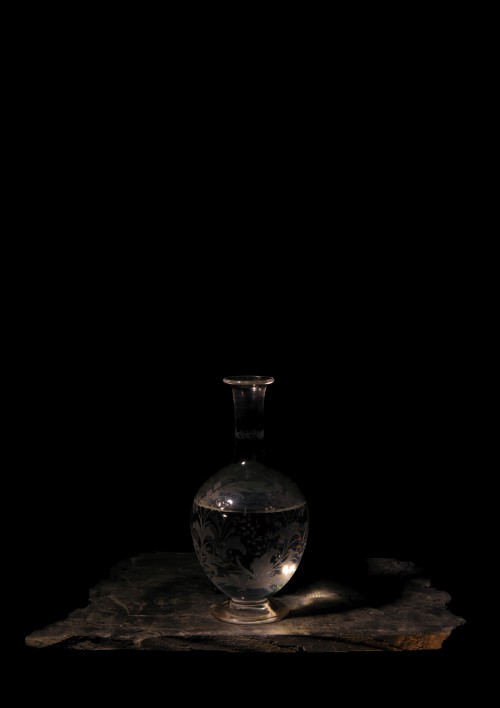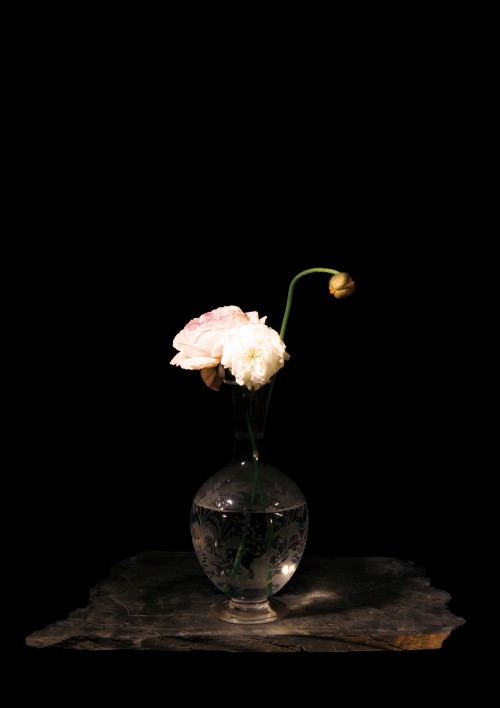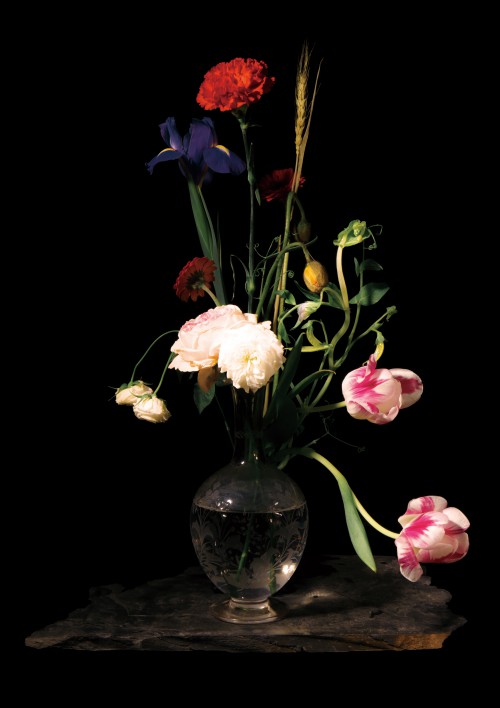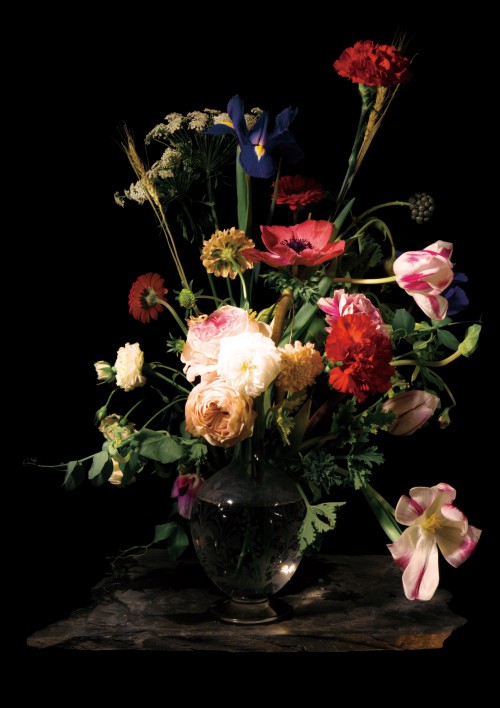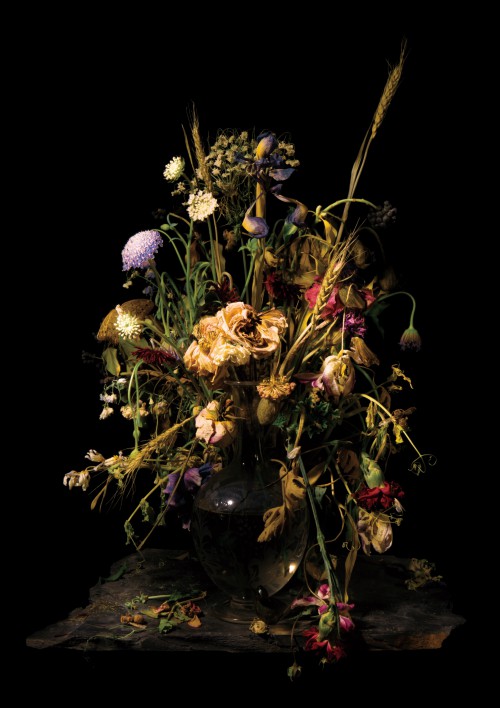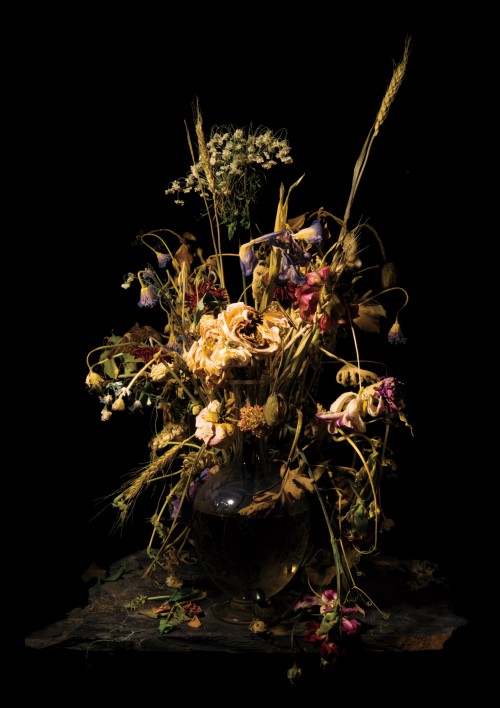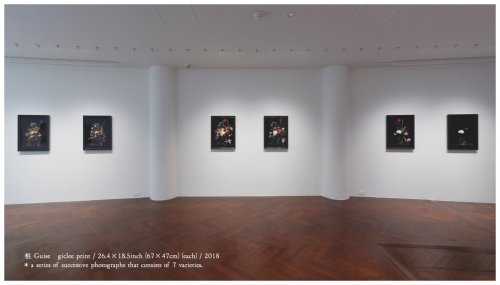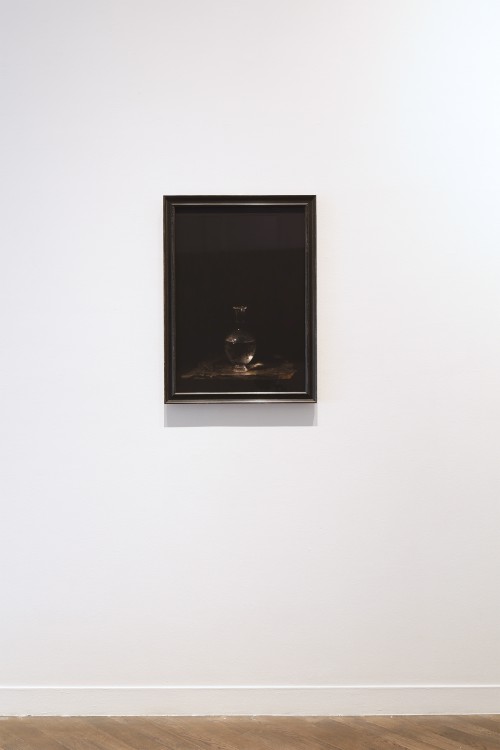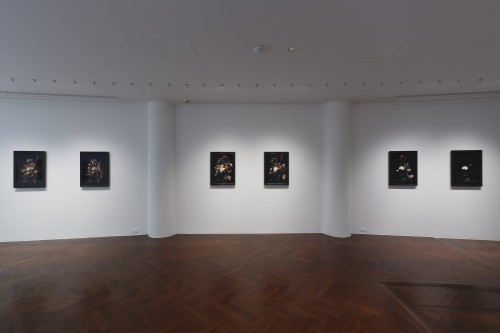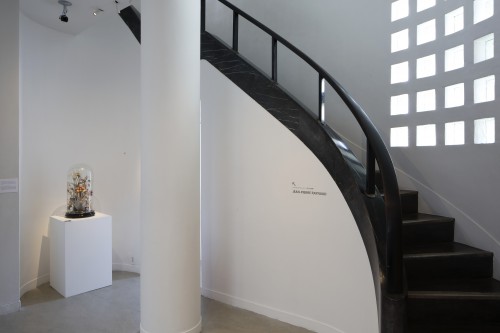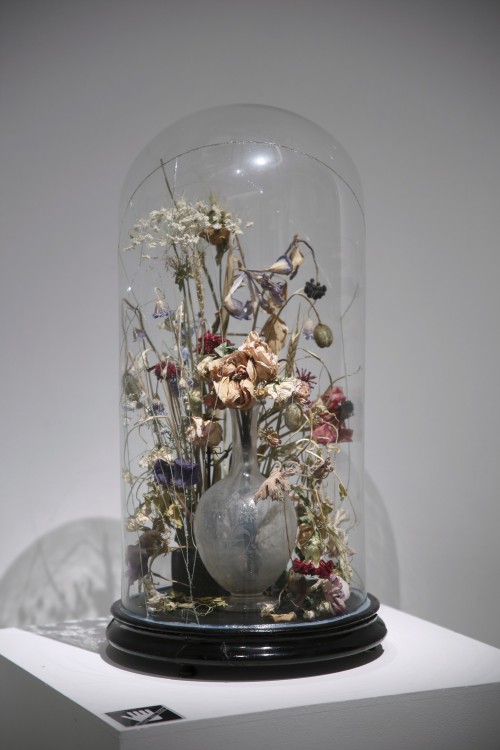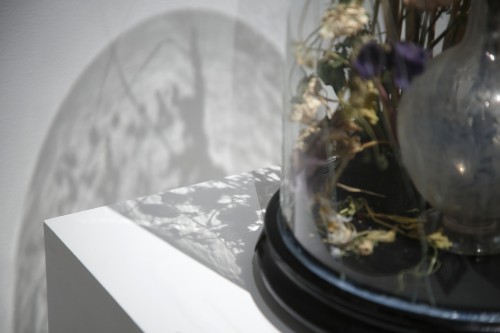普段は公開することのないセットを作る過程から撮影を開始。セット完成後、花が枯れた後も、さらに花を生ける行為を繰り返し、その全行程を撮影、記録してゆく。
父ヤン・ダヴィス・デ・ヘーム(1606-84年)を筆頭に息子2人も静物画を描いている17世紀オランダの画家デヘーム。弟子も多く誰のものかを見分けるのが難しい程、それらの作風はよく似ている。また、同じモチーフや同じような構図で何パターンもの別の花の静物画が存在する。あまりにも似すぎている花の静物画群「Flowers in a Glass Vase」(1660年)など数点を参照しながら、ある時点では、ある静物画に見え、別の時点では、別の静物画になりつつ、撮影は進行した。強引に針金によってねじ曲げる、日常からはかけ離れた奇妙な美の形。
─
This set of shots starts with the process of creating the setting which is not normally shown. Then after the setting is completed, flowers that withered were kept in place while new fresh flowers were added. All stages were shot and recorded.
Jan Davidsz de Heem (1606-84) was a Dutch painter of still-life paintings and the father to two sons who were also painters in his studio, along with many other disciples. So similar are their styles that it is hard to tell who painted what. Moreover, there exists a great many different still-life paintings of flowers with the same motif and similar composition. I proceeded with the shooting of the series while referring to the group of super-similar still-life paintings of flowers, including Flowers in a Glass Vase (1660), with the image looking at one point like one painting, then like a different one at another point. The forced twisted configuration created with wire has a strange beauty divorced from normal life.
Commentary / 作品解説
https://youtu.be/TPkzmgsI3pY
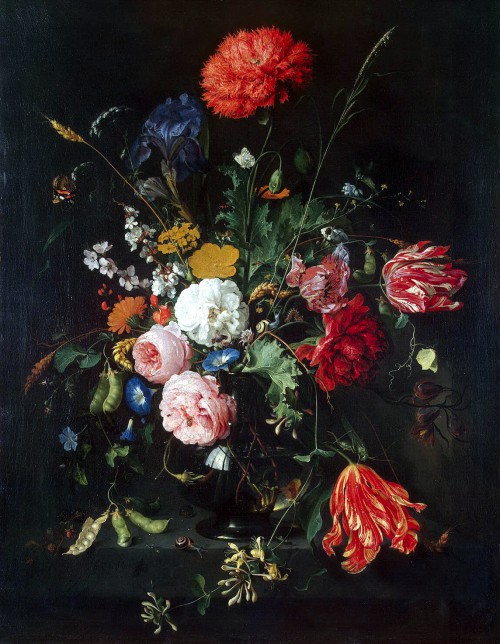 Flowers in a Vase /Jan Davidsz. de Heem / Between 1606 and 1684 / The State Hermitage Museum
Flowers in a Vase /Jan Davidsz. de Heem / Between 1606 and 1684 / The State Hermitage Museum
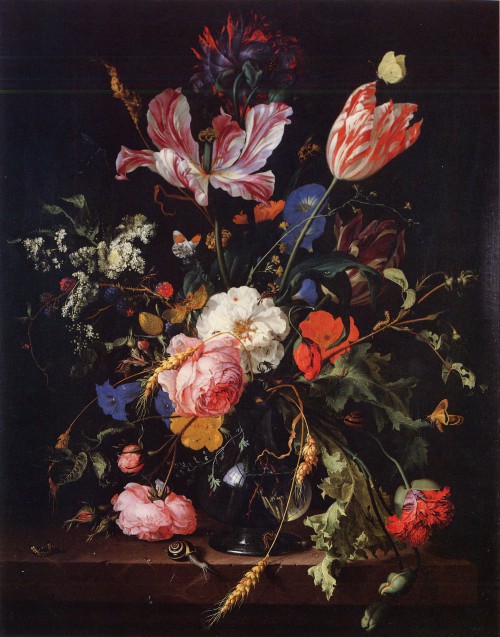 Vase of Flowers / Jan Davidsz. de Heem /1660 / The Tyrolean State Museum
Vase of Flowers / Jan Davidsz. de Heem /1660 / The Tyrolean State Museum
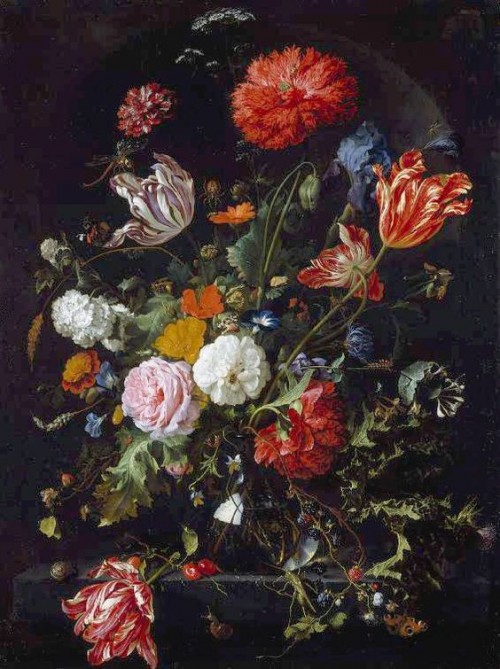 Flowers in a glass vase / Jan Davidsz. de Heem / 1660 / The Fitzwilliam Museum
Flowers in a glass vase / Jan Davidsz. de Heem / 1660 / The Fitzwilliam Museum
「粧」で使用したオブジェクト 花と器
「粧」のセットの一部。カメラには映るようで映らない世界。De Heemの花の絵に習って花を挿そうとすると花瓶の口の小ささからは考えられないぐらいの花の本数を挿さねばならない事に気づく。
─
Flowers and vessel used in Guise
A part of the set for Guise. It's about the world of things that could be but isn't picked up by the camera. As I attempted to add flowers in a way that emulated De Heem's painting of flowers, I realized that the number of flowers required would be much greater than the small mouth of the vase could accommodate.
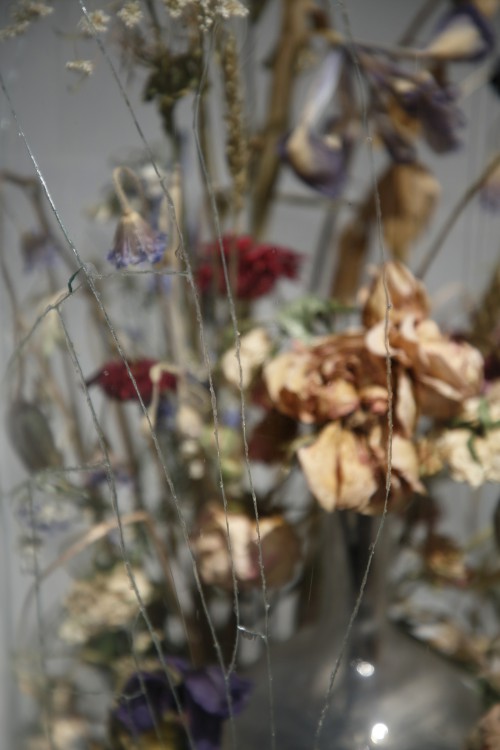
installation-view at Hara Contemporary Art Museum, Tokyo / Photography by Keizo Kioku
